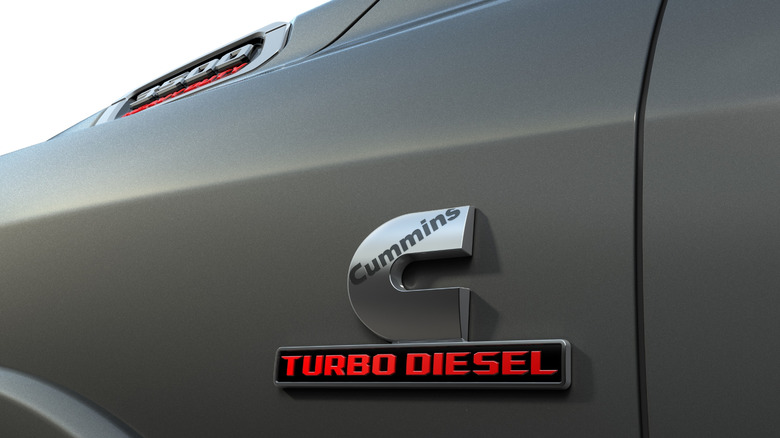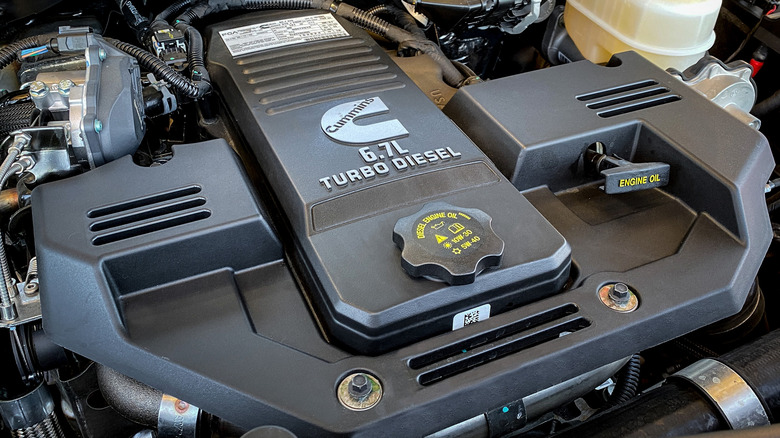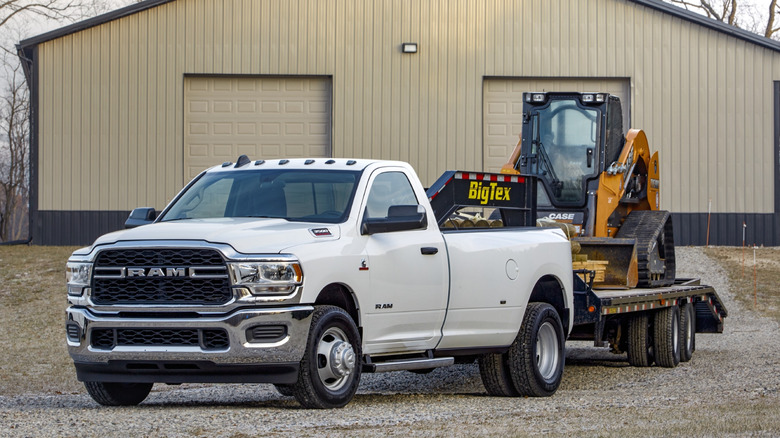Is The 6.7L Cummins Diesel Any Good? What Mechanics & Owners Say About The Engine
For buyers on the hunt for a trusty diesel-powered pickup truck, the Ram 2500 and 2500 heavy-duty models almost immediately come to mind. Their appeal is clear; both pickups are available with the 6.7-liter Cummins inline six-cylinder diesel engine, which is reputed for being one of the most reliable diesel engines ever made. That shouldn't come as too much of a surprise, considering the engine is made from robust materials.
The 6.7 Cummins diesel engine was first introduced in January 2007 as a replacement for the 5.9-liter 24V (ISB) engine — itself a successor to the 5.9-liter 12V (6BT) that powered the heavy-duty Dodge Ram trucks between 1989 and 1998. Power output ranges from 350 to 430 horsepower and torque between 610-1,075 lb-ft, depending on the iteration you get, with the latest high-output version released for 2025 being the most powerful.
But while its performance and reliability are praiseworthy, there are still many who wonder whether the Cummins 6.7-liter turbodiesel is as good as automotive reviews commonly claim, especially since it introduced emissions-reducing systems that weren't in the 5.9-liter Cummins it replaced. According to reports by owners, the 6.7-liter Cummins diesel engine is a good buy, and its reliability is generally rock-solid. But there are common issues. Some owners have found faults with technologies such as exhaust gas recirculation (EGR) and diesel particulate filter (DPF) — a system that's designed to reduce emissions by capturing soot produced by the engine. In addition, some owners said the main seal can let oil leak out.
Clogged DPFs are a nightmare for some drivers
As far as the 6.7-liter Cummins diesel engine, owners seem to have varying experiences. While some have reported having very few, if any, problems, others have mentioned experiencing recurring issues with the emissions systems to the point they've had to delete them altogether. Commenting on the Cummins Forum, user Scotyg said, "I have a 2009 4x4 mega with 30000 miles. Only negative I can give about it is the DPF crap. Its just a liability as far as I can tell. I took it off with the DPF delete and my mpg went up and my egt's went down."
Many of the commenters who had issues with their DPF filters complained about them becoming clogged. Now, as mentioned, DPF filters are usually installed in diesel engines so they can trap soot in the exhaust system and prevent it from emitting black fumes into the environment. These filters are typically able to clean themselves through passive regeneration — a process in which soot deposits are burned off as you drive at high speeds for a long enough time for the exhaust to become hot.
But since some 6.7 Cummins diesel engine owners do not drive at high speeds for an extended time, soot deposits can gather enough to cause DPF blockages, which, in certain cases, cause the engine to enter limp mode.
Common 6.7L Cummins Diesel issues according to mechanics
Besides clogged DPFs, mechanics say cracked EGR coolers and stuck EGR valves are among the most common 6.7-liter Cummins turbodiesel emissions system-related faults. As the name suggests, the EGR cooler is a component that uses engine coolant to cool down some of the exhaust gases that are recirculated into the combustion chamber in a bid to reduce combustion heat in cylinders. Sadly, the EGR cooler can fail due to stress, and when it does, it allows coolant to leak into cylinders, which then gets heated and turns into steam or white smoke that comes from the exhaust. When left untreated, failed EGR coolers can potentially lead to significant engine issues such as head gasket failure.
Turbocharger failure is also common at high mileage, particularly above 120,000 miles. This is said to occur due to soot buildup, which can result in low turbo boost, loud noise when under boost, and severely impact the unit to the point of failure. Additionally, mechanics say the 6.7 Cummins diesel can be prone to oil dilution issues and intake heater grid bolt failure. However, Cummins has since made several changes to improve the 6.7-liter engine, one of which is the switch from traditional grid heating technology to glow plugs.


